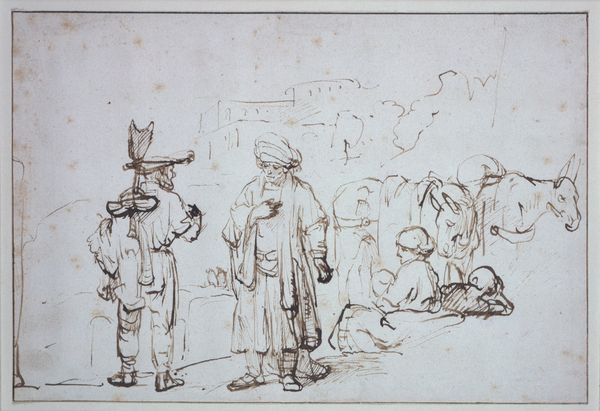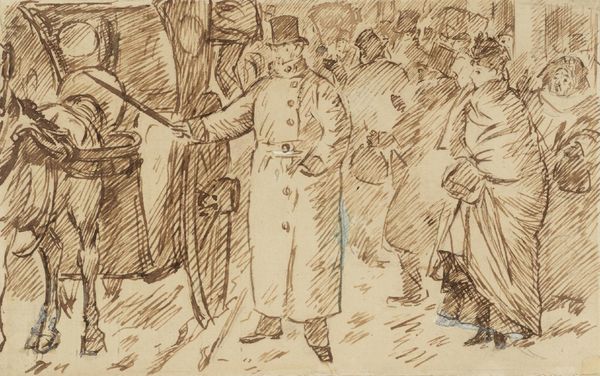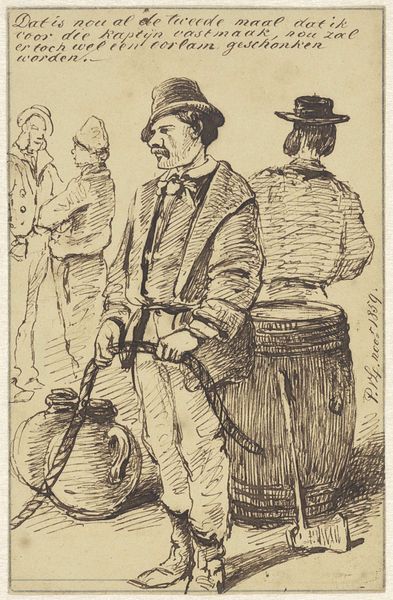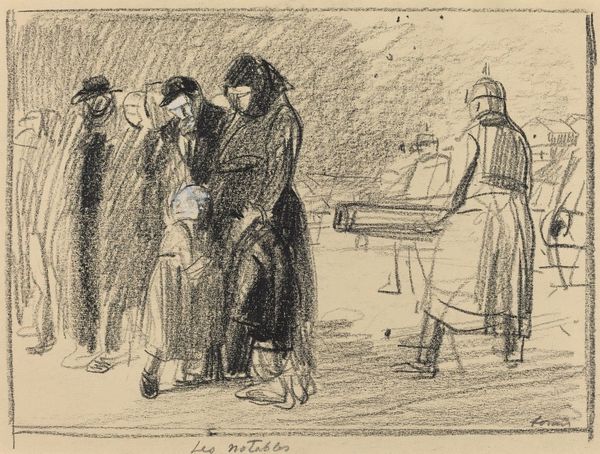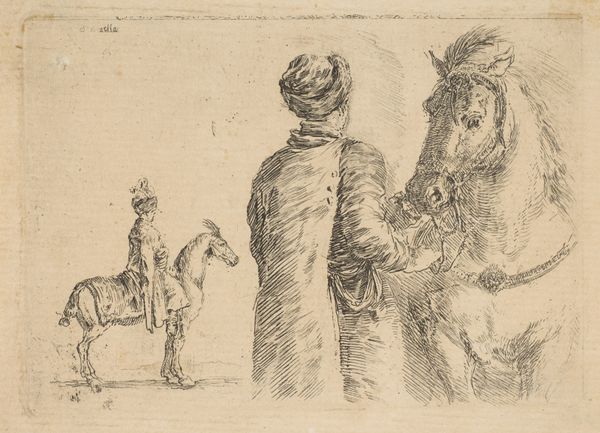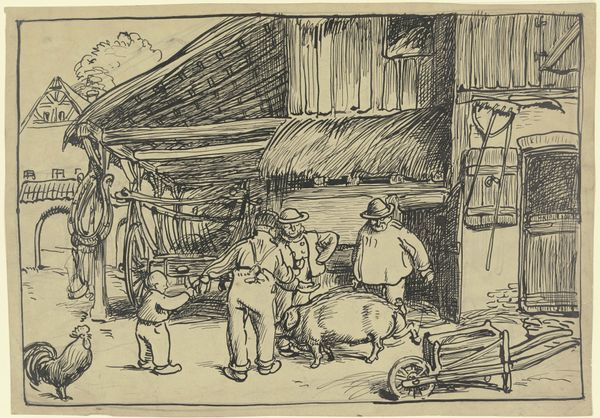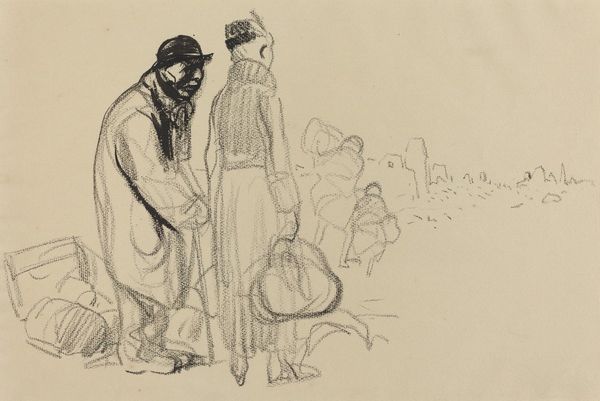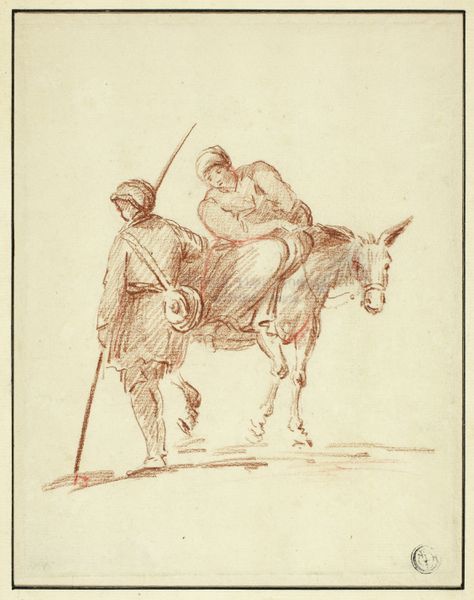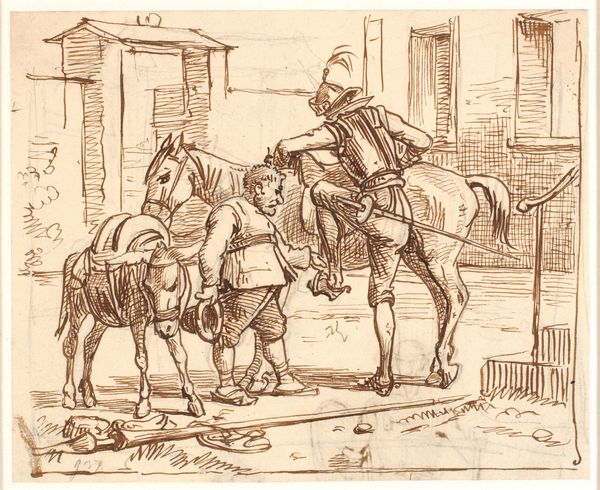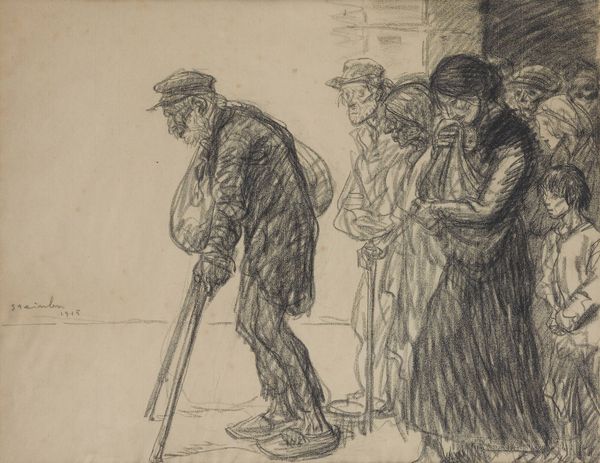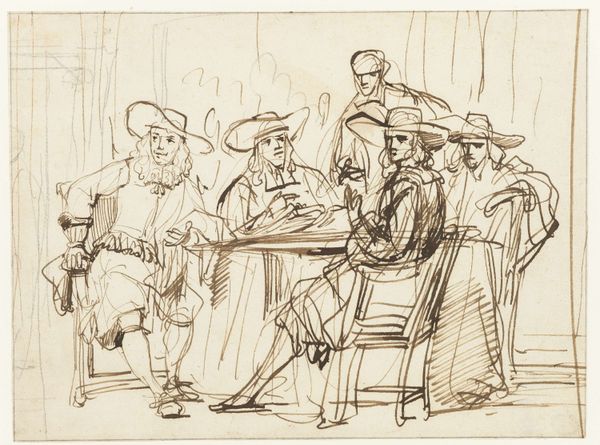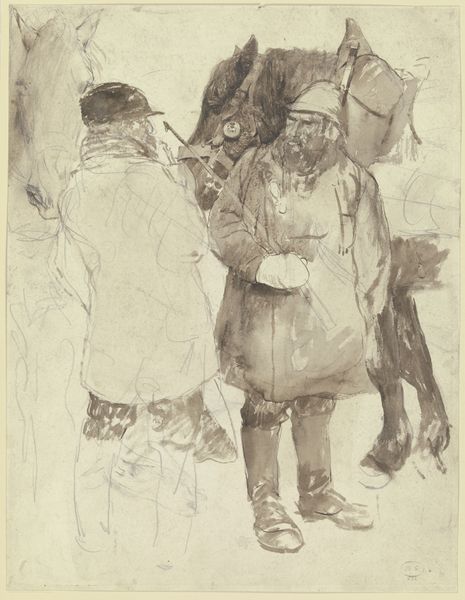
drawing, print, gouache, paper, ink, pen
#
portrait
#
drawing
#
flâneur
# print
#
gouache
#
caricature
#
pencil sketch
#
landscape
#
figuration
#
paper
#
ink
#
pen
#
genre-painting
#
realism
Dimensions: 114 × 190 mm
Copyright: Public Domain
Editor: Here we have Charles Samuel Keene's "Blarney," dating from 1870 to 1891, rendered with pen, ink, and gouache on paper. The initial sketch-like quality makes the whole composition appear spontaneous, almost as if the artist captured a fleeting moment. What strikes you most about it? Curator: The apparent spontaneity is quite deceptive. Observe how Keene manipulates line and form. The density of hatching, particularly around the figures’ clothing, creates depth and volume, sharply contrasting with the ethereal quality of the background. Notice too the strategic placement of the figures; they are not simply placed, but carefully positioned within the plane, interacting through glances and implied gestures. Editor: I see what you mean. It's less casual than I initially perceived. It looks like there are only a few details, but is that perhaps where the artist puts the most attention? Curator: Precisely. The reduction to essential lines necessitates a careful consideration of each mark. Examine the horse’s head, for example. With only a few strokes, Keene conveys its weight and presence, demonstrating an astute understanding of form and representation through minimal means. Further, consider what is omitted as a powerful compositional strategy, not merely a byproduct of speed. Editor: So, by looking at the lines themselves – their weight, direction, and placement – we can begin to understand the artist's deliberate choices in creating this composition. Thank you. Curator: Indeed. Appreciating "Blarney" comes through analyzing how these elements contribute to the work's overall formal integrity. My pleasure.
Comments
No comments
Be the first to comment and join the conversation on the ultimate creative platform.
